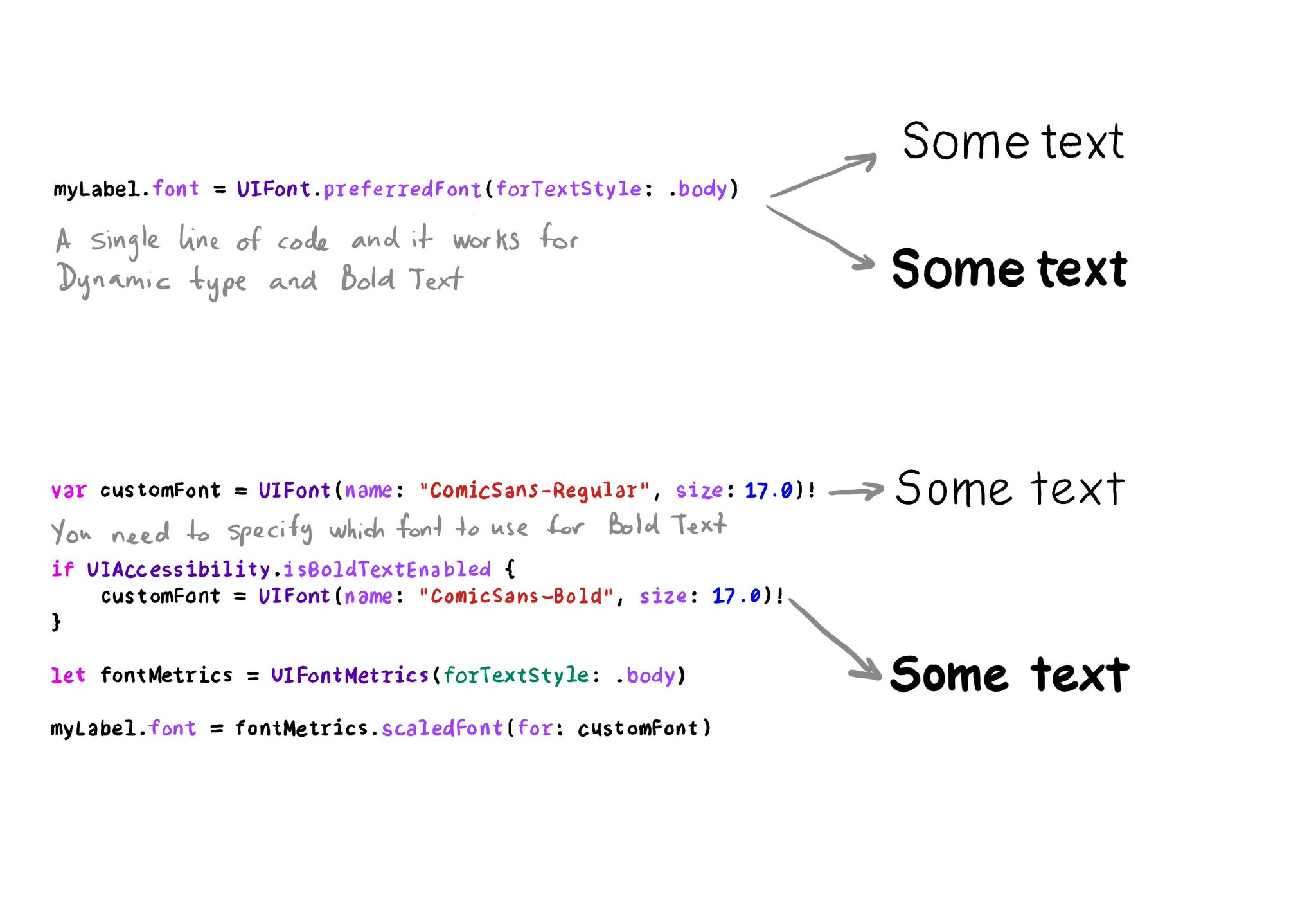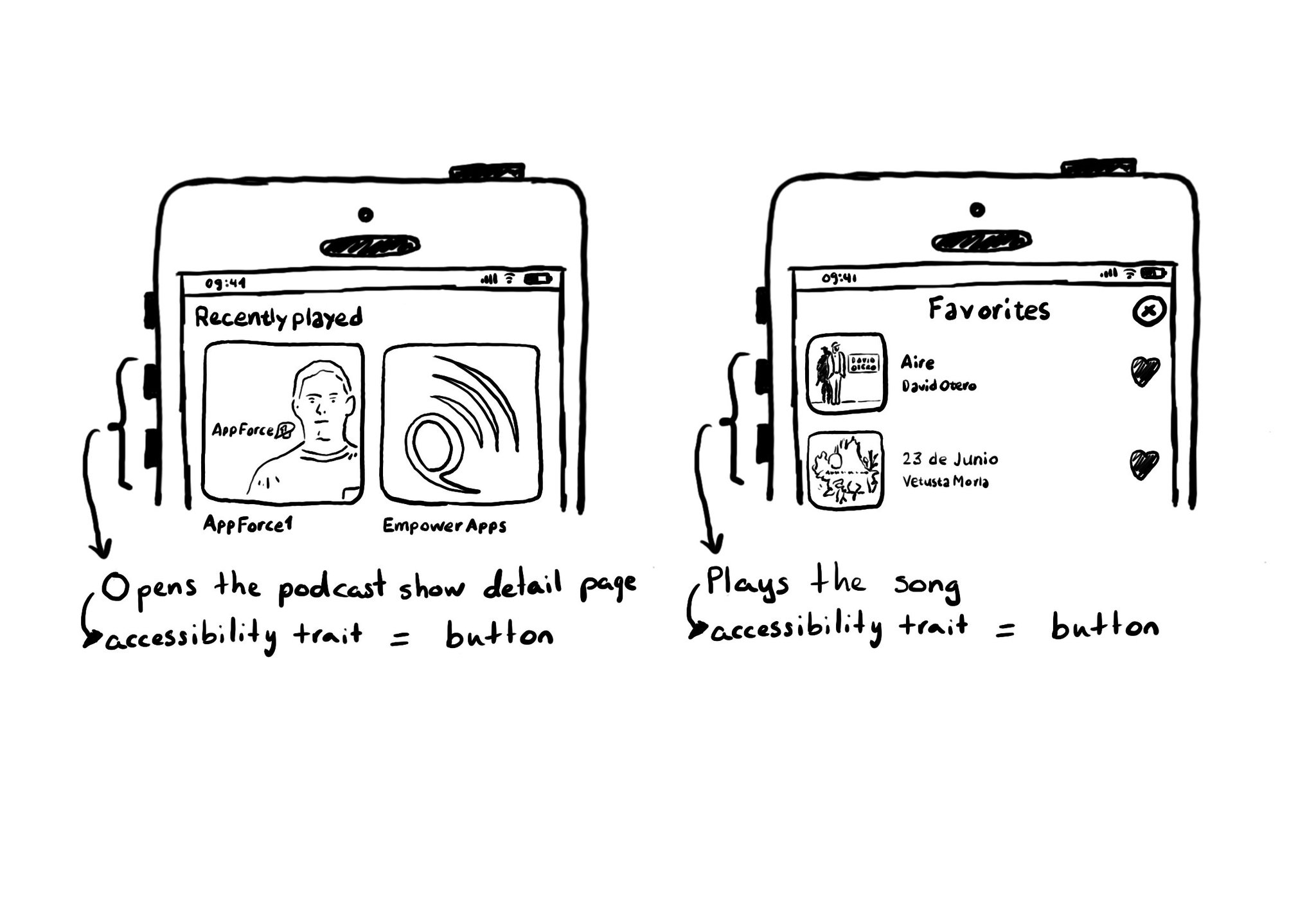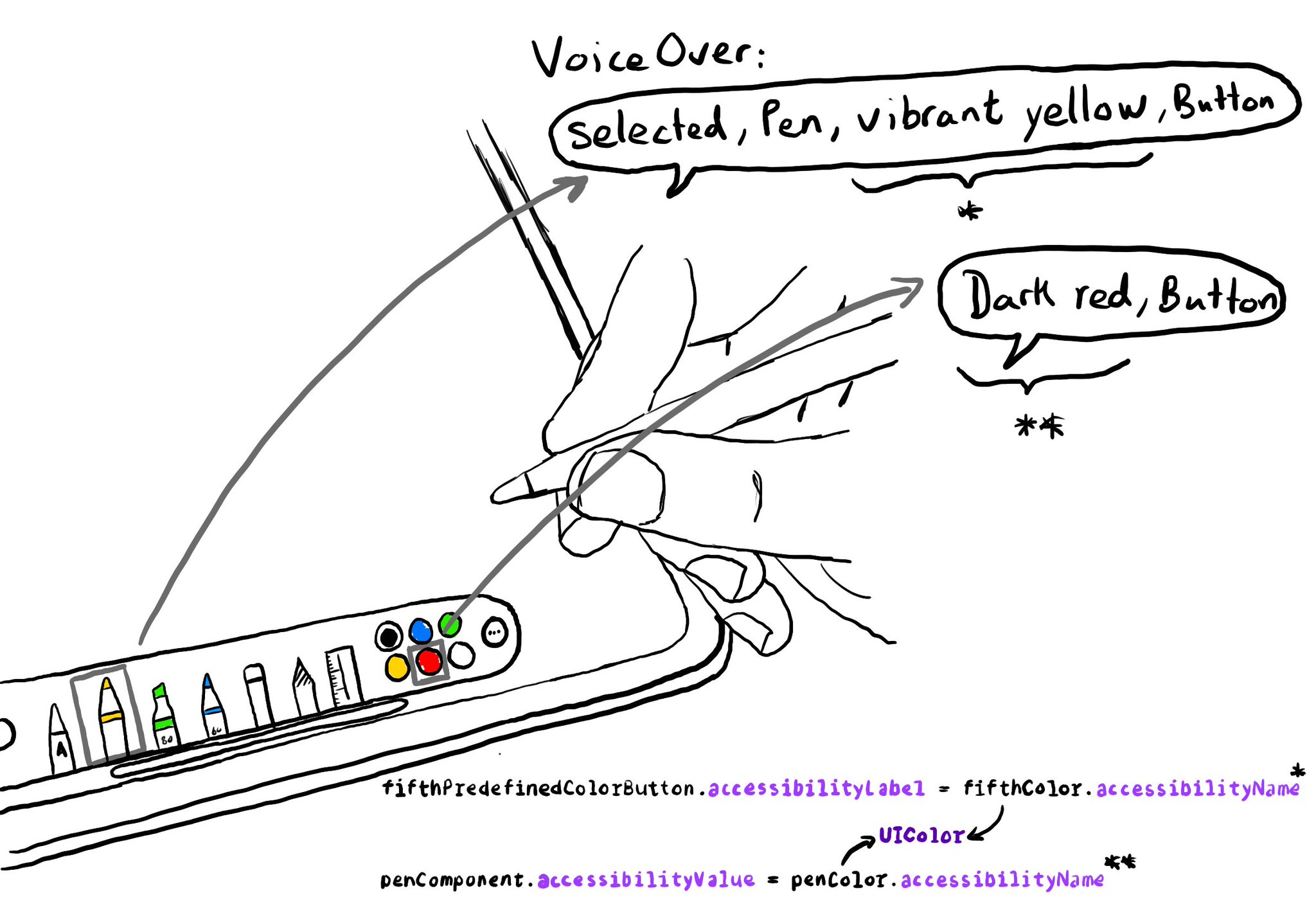If the user has Bold Text enabled, it will just work if you are using fonts based on text styles. If you have your own styles, or you are using a non-system font, you'll need to provide the bolder version of the font when the setting is on.

You may also find interesting...
In iOS' Settings you can specify your preference to use bold text. This can be checked in code in a couple ways: 1. isBoldTextEnabled in UIAccessibility: https://developer.apple.com/documentation/uikit/uiaccessibility/isboldtextenabled 2. legibilityWeight from UITraitCollection: https://developer.apple.com/documentation/uikit/uitraitcollection/legibilityweight

A common example where you need to manually configure the button accessibility trait is for some table/collection view cells. These tend to be “buttons” that perform an action, like playing music, or bring the user to a different screen.

Since iOS 14, you can get a human readable localised name for a UIColor, with a very useful property called accessibilityName, that you can use in accessibility attributes like labels or values. How cool is that? https://developer.apple.com/documentation/uikit/uicolor/accessibilityname